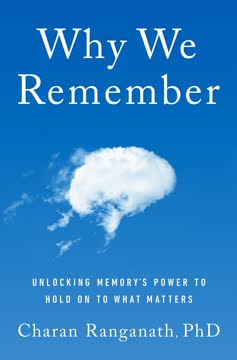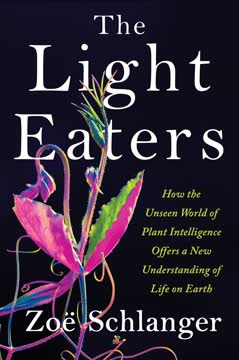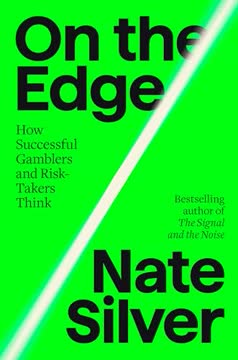Key Takeaways
1. The Engineering Method: Solving Problems with Incomplete Information
"Using rules of thumb to solve problems with incomplete information."
Rules of thumb are essential. Engineers rely on heuristics, or rules of thumb, to guide their problem-solving process. These rules:
- Encapsulate specific knowledge (e.g., safety factors for construction)
- Capture unarticulated knowledge passed down through generations
- Guide the overall approach to problem-solving
Incomplete information is the norm. Engineers often work in situations where complete data or understanding is unavailable. This uncertainty is what separates engineering from pure science and necessitates the use of heuristics.
Problem-solving is the goal. The engineering method aims to create practical solutions, not to discover fundamental truths about nature. This focus on application distinguishes it from the scientific method and allows engineers to produce results even when faced with unknowns.
2. Best Solutions Emerge from Balancing Multiple Constraints
"The best-engineered design emerges from juggling hundreds of restrictions and parameters without which there is no such thing as the best version of anything."
Best is context-dependent. In engineering, "best" doesn't mean perfect or ideal. Instead, it refers to the most suitable solution given the specific constraints and requirements of a particular situation.
Multiple factors influence design. Engineers must consider:
- Cultural forces and societal values
- Available materials and resources
- Time constraints and urgency
- Economic factors
- Environmental impact
Cross-cultural comparisons reveal context. By examining how different cultures solve similar problems, we can see how local constraints and values shape engineering solutions. This highlights the importance of understanding the broader context in which engineering occurs.
3. Embracing Uncertainty: The Core of Engineering Innovation
"To engineer cuts to the core of being human."
Uncertainty drives innovation. Rather than waiting for complete understanding, engineers find ways to work around unknowns. This ability to create solutions in the face of uncertainty is a defining characteristic of engineering.
Phenomenological approaches are key. Engineers often describe and classify phenomena without fully explaining their underlying causes. This allows for practical solutions even when fundamental understanding is lacking.
Probabilistic methods manage risk. When faced with extreme events or complex systems, engineers use statistical approaches to predict outcomes and design accordingly. This allows for effective decision-making in uncertain situations.
4. Resources Shape Engineering Solutions in Subtle Ways
"A technology carries with it the choices and biases of the engineers who created the technology."
Material constraints influence design. The availability or scarcity of specific materials can fundamentally shape the form and function of engineered solutions.
Energy sources are intertwined with design. The type of energy available (e.g., steam, electricity, fossil fuels) often dictates the overall structure and operation of engineered systems.
Knowledge is a critical resource. The accumulated experience, skills, and understanding of engineers form an essential foundation for innovation. This highlights the importance of:
- Diversity in engineering teams
- Preserving and sharing knowledge across generations
- Continuous learning and adaptation
5. The Engineering Mindset: Trial, Error, and Trade-offs
"The engineering method is not the scientific method, yet clearly science and engineering are related."
Trial and error is systematic. Engineers don't engage in random experimentation. Instead, they use intuition, past knowledge, and careful record-keeping to guide their exploration of potential solutions.
Building on past knowledge is crucial. Engineers are "conservatives" in the sense that they prefer to make incremental improvements to existing designs rather than starting from scratch. This approach reduces risk and capitalizes on proven solutions.
Trade-offs are inevitable. Every engineering design involves balancing competing priorities. Engineers must decide how to optimize various characteristics, often sacrificing one aspect to improve another.
6. Science and Mathematics Provide Powerful Tools for Engineers
"Science equips engineers with better rules of thumb—rules that eliminate unproductive paths and suggest fruitful ones."
Science informs engineering. While engineering is not simply applied science, scientific knowledge provides engineers with improved heuristics and narrows the field of potential solutions.
Mathematics enables prediction. Statistical and probabilistic methods allow engineers to make informed decisions about future events and system behavior. This is particularly crucial in risk assessment and design for extreme conditions.
Both science and math are tools, not ends. Engineers use scientific and mathematical knowledge pragmatically, often in ways that might not satisfy the rigorous standards of pure scientists or mathematicians. The goal is practical problem-solving, not theoretical perfection.
7. The Myth of the Lone Inventor and the Reality of Technological Evolution
"To tell only a 'great man' story hides the contributions of others who were essential to a technology's development."
Innovation is collaborative. Major technological advances are rarely the work of a single genius inventor. Instead, they result from the cumulative efforts of many individuals and often build on existing ideas.
Manufacturing drives invention. The ability to mass-produce a technology is often as crucial as its initial conception. Many "inventions" are really innovations in manufacturing processes that make existing ideas practical and accessible.
Overlooked contributors are important. By examining the full history of technological development, we often uncover critical contributions from women, minorities, and others whose work has been historically undervalued.
8. Engineering as a Reflection of Human Creativity and Cultural Values
"Engineering is a creative profession that surpasses all other human endeavors as a demonstration of the supreme suppleness of the human mind."
Engineering is deeply human. The drive to create and solve problems is a fundamental aspect of human nature, evident throughout history and across cultures.
Cultural context shapes technology. Engineering solutions reflect the values, needs, and constraints of the societies that produce them. This can lead to both positive innovations and problematic biases.
Ethical considerations are crucial. As engineers shape the world around us, they must grapple with the moral implications of their work. Understanding the engineering method empowers society to engage in meaningful discussions about technological development and its consequences.
Last updated:
FAQ
What is The Things We Make by Bill Hammack about?
- Exploration of engineering method: The book delves into the unique mindset and approach engineers use to solve problems, emphasizing creativity, flexibility, and working with incomplete information.
- Historical and modern examples: Hammack illustrates his points with stories ranging from medieval cathedrals to soda cans, showing how engineering has shaped the world across eras and cultures.
- Contrast with science: The narrative distinguishes engineering from science, highlighting that engineering is about creating solutions, not just discovering knowledge.
- Demystifying technology: The book aims to reveal the invisible processes behind everyday inventions, helping readers understand how technology is developed and used.
Why should I read The Things We Make by Bill Hammack?
- Demystifies engineering: The book uncovers the hidden creativity and complexity behind engineering achievements, challenging common myths about invention and innovation.
- Informs technological understanding: Readers gain insight into how technologies evolve, the societal and cultural factors at play, and the importance of diverse perspectives in engineering.
- Empowers critical thinking: Understanding the engineering method equips readers to critically assess technological progress and its ethical implications.
- Accessible and engaging: Hammack’s storytelling makes complex concepts approachable, making it valuable for both technical and non-technical audiences.
What are the key takeaways and themes from The Things We Make by Bill Hammack?
- Engineering as creative problem-solving: Engineering is a pragmatic, iterative process that uses heuristics to address real-world challenges under uncertainty.
- Best is context-dependent: Solutions are judged by how well they fit cultural, material, and societal contexts, not by universal standards.
- Human and ethical dimension: Engineering reflects human values and biases, highlighting the need for diversity and ethical reflection in technological development.
- Science and math as tools: While science and mathematics provide powerful heuristics, they do not replace the creative, adaptive nature of engineering.
- Societal empowerment: Demystifying engineering enables society to better engage with and guide technological change.
How does Bill Hammack define the engineering method in The Things We Make?
- Rules of thumb at the core: The engineering method is defined as “solving problems using rules of thumb that cause the best change in a poorly understood situation using available resources.”
- Embracing uncertainty: It is a flexible, creative approach that works with incomplete information, rather than waiting for full scientific understanding.
- Mindset, not a process: Hammack describes it as an attitude or mindset, where engineers combine heuristics and adapt to context.
- Distinct from science: Unlike the scientific method, the engineering method is not a fixed sequence of steps but a pragmatic, context-driven approach.
How does The Things We Make by Bill Hammack distinguish engineering from science?
- Different goals: Science seeks to uncover universal truths, while engineering aims to create specific, workable solutions to real-world problems.
- Methodological differences: The scientific method follows a prescribed process, whereas the engineering method is flexible and relies on heuristics and trade-offs.
- Coexistence of rules: Engineering rules of thumb can coexist and be applied pragmatically, even as scientific theories evolve or are replaced.
- Examples in practice: The book uses examples like medieval cathedrals and the steam turbine to illustrate how engineering operates independently of complete scientific knowledge.
What role do "rules of thumb" play in the engineering method according to The Things We Make?
- Heuristics as shortcuts: Rules of thumb are experience-based, imprecise guidelines that help engineers solve problems efficiently when full information is lacking.
- Three classes of rules: These include encapsulated knowledge (like safety factors), traditional or unarticulated knowledge (like recipes), and problem-solving strategies (like “freeze the design”).
- Context-dependent and flexible: Rules of thumb are judged by their effectiveness in context, not by absolute correctness, and can even contradict each other.
- Foundation of engineering: They are essential for navigating uncertainty and making progress when scientific certainty is unavailable.
What are the three key strategies of the engineering mindset in The Things We Make by Bill Hammack?
- Trial and error: Systematic experimentation, guided by intuition and record-keeping, allows engineers to explore design spaces and learn from failures.
- Building on past knowledge: Engineers use institutional memory, historical insights, and established heuristics to avoid reinventing the wheel and to guide problem-solving.
- Accepting trade-offs: Engineering involves balancing conflicting goals and constraints to find the best compromise for a given context.
- Iterative improvement: These strategies collectively enable engineers to refine solutions over time, adapting to new challenges and resources.
How does The Things We Make by Bill Hammack explain the concept of "best" in engineering solutions?
- Relative, not absolute: “Best” is defined by how well a solution balances constraints and parameters unique to its cultural, material, and societal context.
- Cross-cultural examples: The book uses cases like Egyptian grape juice extraction and Arawak manioc detoxification to show that “best” varies with available resources and needs.
- Bias and inclusivity: Engineering solutions can reflect cultural biases, such as gender-biased crash test dummies, underscoring the importance of diversity in design.
- Continuous evaluation: What is “best” can change as contexts and available resources evolve.
How does The Things We Make by Bill Hammack illustrate the relationship between science and engineering?
- Science as a source of heuristics: Scientific discoveries provide improved rules of thumb that guide engineering but do not dictate solutions.
- Engineering applies creatively: Engineers use scientific knowledge alongside intuition, trial and error, and practical constraints to create workable solutions.
- Example of steam turbine: Charles Parsons combined scientific data with practical engineering to invent the steam turbine, showing science as a tool, not a blueprint.
- Independence from science: Engineering often advances even when scientific understanding is incomplete or absent.
How does The Things We Make by Bill Hammack describe the role of mathematics in engineering?
- Mathematics as a heuristic tool: Mathematics provides powerful rules of thumb, especially through probability and statistics, rather than exact theorems.
- Risk assessment and prediction: Engineers use statistical methods like extreme value theory to predict rare events and design safe structures.
- Pragmatic application: Mathematical models are used as approximations, acknowledging uncertainty and changing conditions such as climate change.
- Not a substitute for creativity: Mathematics supports, but does not replace, the creative and adaptive aspects of engineering.
What historical examples does The Things We Make by Bill Hammack use to illustrate the engineering method?
- Medieval cathedrals: The construction of Gothic cathedrals without mathematics or science, relying on rules of thumb and templates, exemplifies creative problem-solving.
- O-ring invention: Niels Christensen’s intuitive and trial-and-error approach to inventing the O-ring seal demonstrates practical engineering under uncertainty.
- Josiah Wedgwood’s ceramics: Wedgwood’s systematic experimentation and acceptance of trade-offs in creating jasperware highlight the engineering mindset.
- Steam turbine development: Charles Parsons’s integration of scientific data and practical knowledge showcases the interplay between science and engineering.
How does The Things We Make by Bill Hammack challenge common myths about engineering and invention?
- Myth of the lone inventor: The book shows that invention is a cumulative, collaborative process involving many contributors, not just a single genius.
- Engineering as applied science: Hammack argues that engineering is not merely the application of science, but a creative discipline that thrives on uncertainty.
- Linear progress fallacy: The narrative rejects the idea of a straight path from idea to solution, emphasizing the iterative and complex nature of engineering development.
- Highlighting hidden contributors: The book brings attention to overlooked figures, such as Lewis Latimer in the development of the light bulb, to illustrate the importance of diverse contributions.
What are the best quotes from The Things We Make by Bill Hammack and what do they mean?
- “Engineering is using rules of thumb to solve problems with incomplete information.” This quote encapsulates the core of the engineering method, emphasizing pragmatism and adaptability.
- “Best is not absolute, but relative to context.” Hammack highlights that engineering solutions must fit their specific cultural, material, and societal circumstances.
- “Science provides gold-plated, grade A, supremo rules of thumb.” This phrase illustrates how scientific knowledge enhances, but does not replace, the practical heuristics engineers use.
- “Engineering is more closely related to art than science.” The book argues that engineering, like art, involves creativity, intuition, and working with ambiguity.
- “Demystifying technology empowers society.” Hammack’s message is that understanding how things are made enables people to engage with and shape technological progress responsibly.
Review Summary
The Things We Make offers an engaging exploration of engineering history and methodology. Hammack illuminates the distinction between science and engineering, showcasing inventions from cathedrals to microwaves. Readers appreciate the accessible writing and fascinating stories, though some find certain sections overly technical or repetitive. The book challenges popular misconceptions about lone inventors, emphasizing collaborative efforts. While praised for its insights into engineering thinking, some reviewers critique Hammack's stance on engineering versus science and his treatment of social issues in design.
Similar Books





Download PDF
Download EPUB
.epub digital book format is ideal for reading ebooks on phones, tablets, and e-readers.




